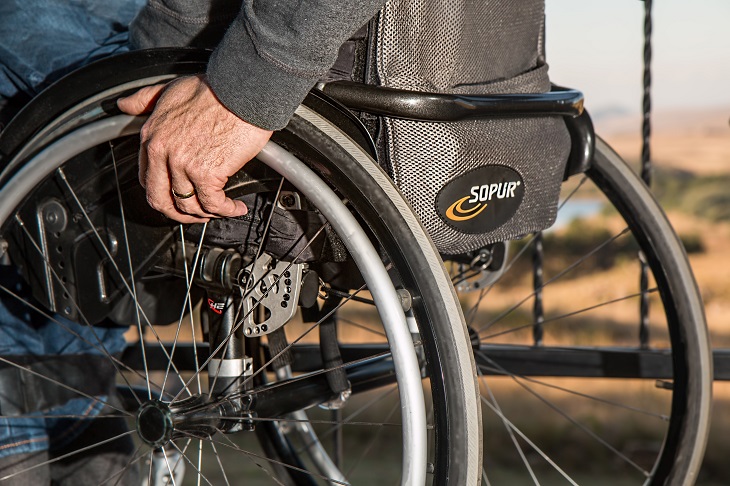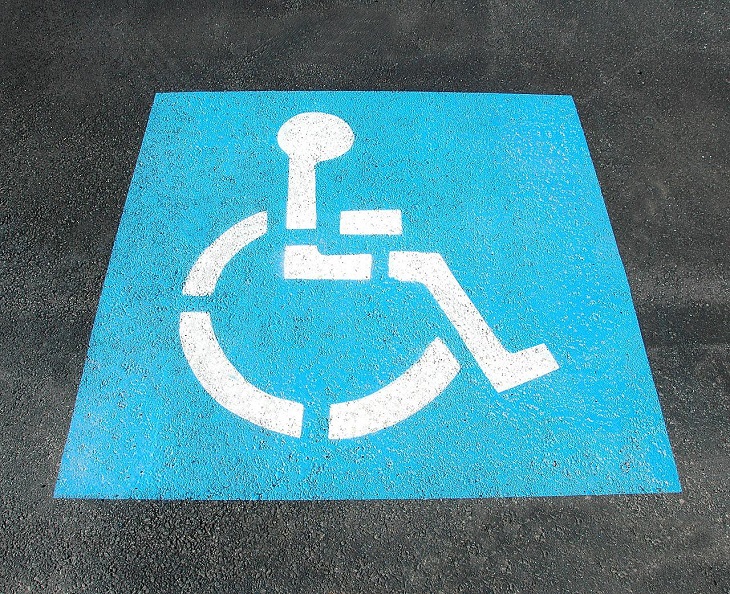Qualifying Conditions For A Disabled Parking Placard In Maryland

If you’re thinking about applying for a disabled parking permit in Maryland, you’ve come to the right place! We know it can be confusing navigating all the information about applying and using your permit online, so we’re here to help you make it all a bit easier. In this post, we’ll describe some of the qualifying conditions for a disabled parking permit in Maryland. We’ll also briefly describe the application process so you know how to get on the road to receiving your permit. Read on for all you need to know!
Qualifying Conditions For A Disabled Parking Placard In Maryland
First of all, let’s answer the main question: how do you qualify for disabled parking in Maryland? It’s important to remember that even if you suffer from a physical disability, you can only use disabled parking spaces if you have a valid disabled parking permit.
Maryland issues three different types of permit. Which one you receive depends on the severity of your illness or disability (and even permanent permits aren’t valid forever!):
- Permanent license plates: valid for two years
- Temporary placards: valid for a maximum of six months
- Permanent placards: valid for four years
There are numerous ways to qualify for a disabled parking permit, and not all of the qualifying conditions are visible or obvious. For this reason, it’s important to discuss your medical condition thoroughly and honestly with your doctor, who will better be able to advise you on the options available to you. However, in the list below, we’ll go through some of the most common qualifying conditions for a disabled parking permit in Maryland.
Extreme mobility impairment
If you cannot walk for more than 200 feet without rest, or if you require the use of an assistive device in order to walk (such as a brace or cane), you can avail of a disabled parking permit. Of course, this also applies to those who require the use of a wheelchair.
If you have a condition of this type, you should also be aware that there is a whole range of vehicle adaptations available to you, which may make driving easier and much more comfortable.
Loss of limb
If you suffer from loss of limb (arm, leg, hands, or feet), you’re eligible for a disabled parking permit. This also applies to those who have loss of function in one of these body parts, rendering them incapable of use.
Severe lung disease
If you suffer from a severe lung condition or disease that affects your daily life, you should apply for a disabled parking permit. This also applies to those who require portable oxygen from a tank for a severe respiratory condition.
Serious cardiovascular conditions
Heart conditions classified as Class III or Class IV under the American Heart Association Guidelines qualify for disabled parking. These are serious cardiac conditions that greatly impact daily life and will need to be assessed by a licensed physician.
Permanently impaired vision
According to the Maryland Department of Transportation, this applies to those who suffer from vision impairment to the following extent: “A permanent impairment of both eyes so that: 1) The central vision acuity is 20/200 or less in the better eye, with corrective glasses, or 2) There is a field defect in which the peripheral field has contracted to such an extent that the widest diameter of visual field subtends an angular distance no greater than 20 degrees in the better eye.”
How to get a disability placard in Maryland
Now that we’ve gone through some of the most common qualifying conditions (but remember: the above list is not exhaustive!), it’s time to explain the application process.
Dr. Handicap has licensed physicians in each US state, so it’s easy to arrange your medical consultation online. However, prior to this stage, you need to download and complete the MVA disability placard form with all the relevant information (you can also get this form in-person at your local MVA office). This form also offers some guidance and explanations of different terms, so be sure to read it thoroughly before completing all the necessary sections.
Then, you’ll need to arrange your medical consultation (which can be done with the help of Dr. Handicap). As you can see, there is a section of the form to be filled out by a medical professional, which can be done at the end of your medical consultation. Ensure you make the form available to the specialist you speak to so that they can certify the application.
Once this form is fully completed, you just need to submit it to get the ball rolling! To do so, you can either go back to your local Maryland MVA office or send it via fax or email. Ensure you also bring or enclose the relevant fee if you are applying for plates ($20) – placards are free.
Shortly after submission, you should receive your placard, and then you’ll be free to use disabled parking spaces all over Maryland. You will notice these spaces as they are identified by the universal symbol: a white wheelchair on a blue background.
Featured image by Brendan Beale on Unsplash

